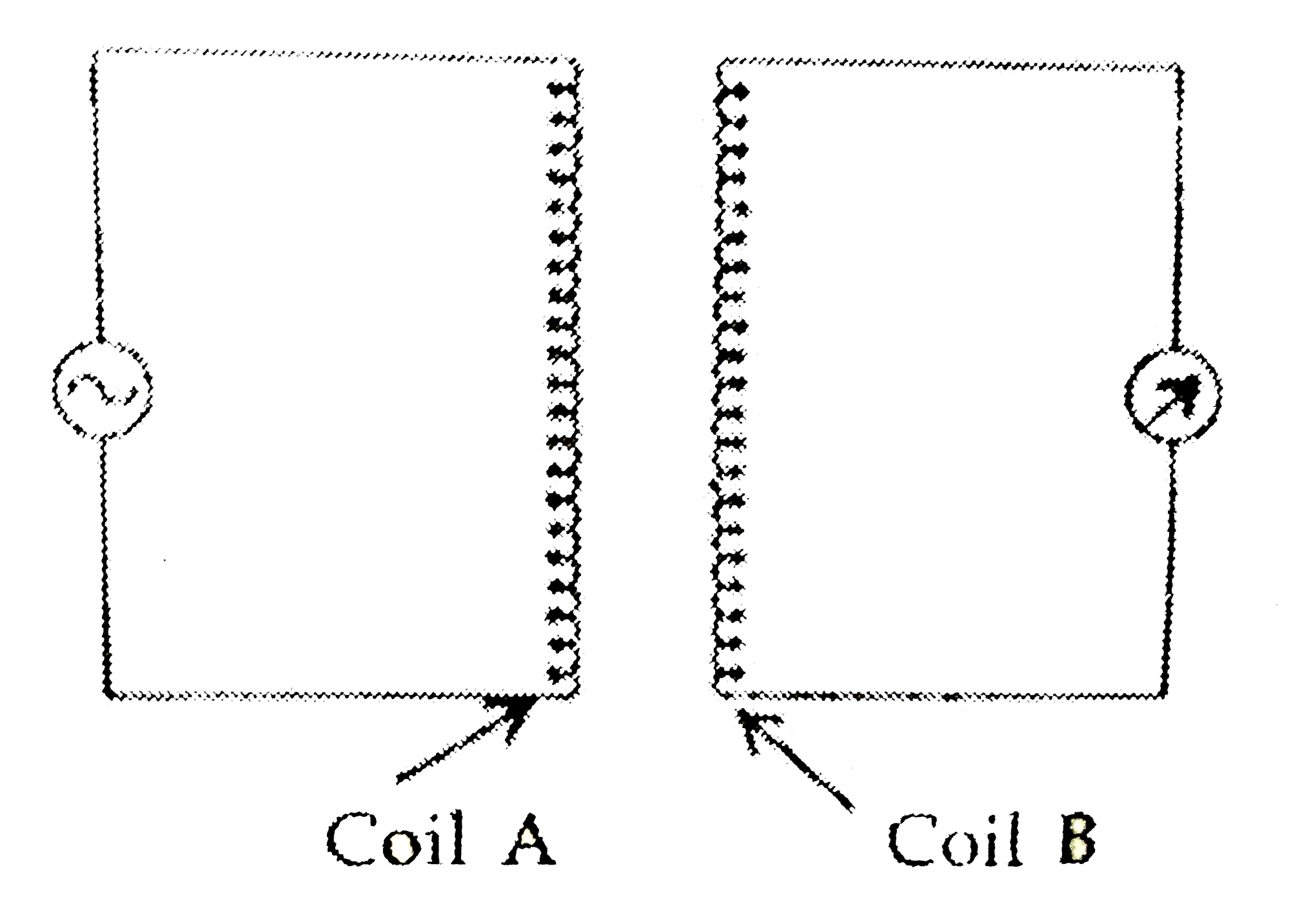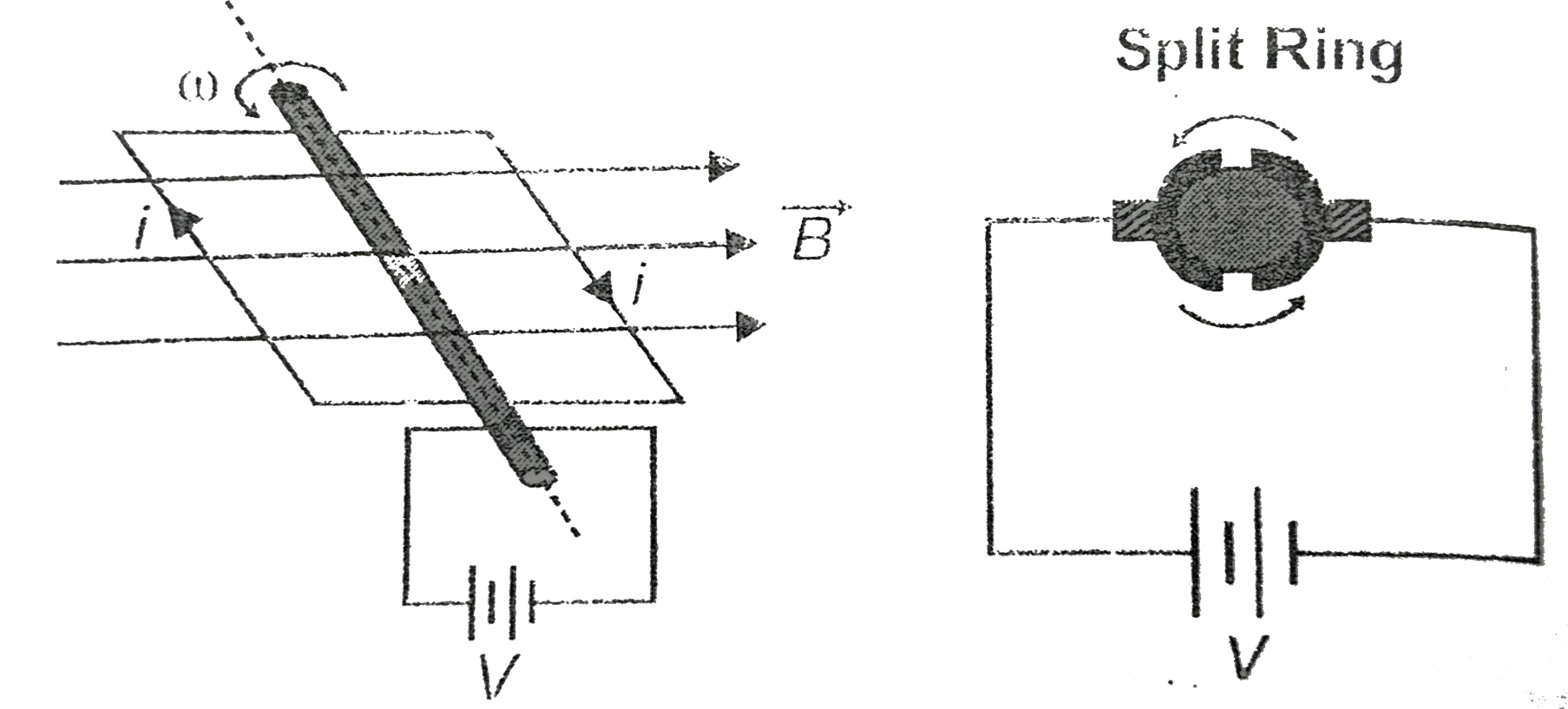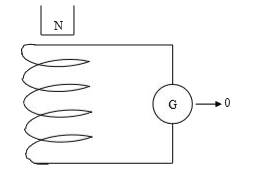The circuit arrangement given below shows that when an a.c. passes through the coil A, the current starts flowing in the coil B.
(i) State the underlying principle involved.
(ii) Mention two factors on which the current produced in the coil B depends.

Step by step video & image solution for The circuit arrangement given below shows that when an a.c. passes through the coil A, the current starts flowing in the coil B. (i) State the underlying principle involved. (ii) Mention two factors on which the current produced in the coil B depends. by Physics experts to help you in doubts & scoring excellent marks in Class 12 exams.
Updated on:21/07/2023Similar Questions
Current I A flowing in a circular coil of radius r. then the magnetic induction at the centre is B. If the current is doubled then the magnetic induction will be
View SolutionWhen starter motor of a car is switched on for 0.8s, a charge 24C passes through the coil of the motor. Calculate the current in the coil.
View SolutionDraw a schematic arrangement for winding of primary and secondary coil in a transformer when the two coils are wound on top of each other.
(ii) State the underlying principle of a transformer and obtain the expression for the ratio of secondary to primary voltage in terms of the
(a) number of secondary and primary windings and
(b) primary and secondary currents.
(iii) Write the main assumption involved in deriving the above relations.
(iv) Write any two reasons due to which energy losses may occur in actul transformers.
View SolutionA dc motor works on the principle that a current carrying coil, when placed in a magnetic field experiences a torque. The arrangement consists of a coil suspended in a region of magnetic field. When a current is passed through the coil, it experiences torque and starts rotating. A simple arrangement is shown below.

The coil rotates under the action of torque. The current is supplied to the coil by an arrangement of two sliding contacts and a split ring. As the coil rotates, the magnetic flux linked with the coil changes. This leads to production of an induced emf ε in the coil. By Lenz's law, the induced emf opposes the applied voltage and therefore, it is called back emf. If R is the resistance in the coil, the current i flowing through the coil at any instant is i=V−εR. The back emf is developed due to induction and it is directly proportional to speed of rotation and it is directly proportional to speed of rotation of the motor. There is a continuous power loss i2R in the motor, in form of heat.
When a dc motor is running unloaded (full speed) the current through it is 1 A. What will be the current flowing through the motor, when it is loaded to run at half its maximum speed, it applied voltage is 10 V and armature resistance is 5Ω
View SolutionA dc motor works on the principle that a current carrying coil, when placed in a magnetic field experiences a torque. The arrangement consists of a coil suspended in a region of magnetic field. When a current is passed through the coil, it experiences torque and starts rotating. A simple arrangement is shown below.

The coil rotates under the action of torque. The current is supplied to the coil by an arrangement of two sliding contacts and a split ring. As the coil rotates, the magnetic flux linked with the coil changes. This leads to production of an induced emf ε in the coil. By Lenz's law, the induced emf opposes the applied voltage and therefore, it is called back emf. If R is the resistance in the coil, the current i flowing through the coil at any instant is i=V−εR. The back emf is developed due to induction and it is directly proportional to speed of rotation and it is directly proportional to speed of rotation of the motor. There is a continuous power loss i2R in the motor, in form of heat.
In a dc motor, V is applied voltage, ε is back emf, i is current through the motor and R is resistance of the coil. mechanical power output of the motor is
View SolutionA dc motor works on the principle that a current carrying coil, when placed in a magnetic field experiences a torque. The arrangement consists of a coil suspended in a region of magnetic field. When a current is passed through the coil, it experiences torque and starts rotating. A simple arrangement is shown below.

The coil rotates under the action of torque. The current is supplied to the coil by an arrangement of two sliding contacts and a split ring. As the coil rotates, the magnetic flux linked with the coil changes. This leads to production of an induced emf ε in the coil. By Lenz's law, the induced emf opposes the applied voltage and therefore, it is called back emf. If R is the resistance in the coil, the current i flowing through the coil at any instant is i=V−εR. The back emf is developed due to induction and it is directly proportional to speed of rotation and it is directly proportional to speed of rotation of the motor. There is a continuous power loss i2R in the motor, in form of heat.
The mechanical power output of a dc motor is maximum, when the current through the motor is
View SolutionA current I is flowing in a straight conductor of length L. The magnetic induction at a point distant L4 from its centre will be
View SolutionFrom the diagram given below:

What will be the direction of current flowing through the coil when the magnet is dropped in? (Clockwise or anticlockwise).
View SolutionA tangent galvanometer shows no deflection when a current is passed through it. But when the current is reversed, it gives a delfection of 180°, then the plane of the coil should have been oriented:.
View SolutionA coil of wire having inductance and resistance has a conducting ring placed coaxially within it. The coil is connected to a battery at time t=0, so that a time-dependent current 11(t) starts following through the coil. If I2(t) is the current induced in the ring, and B (t) is the magnetic field at the axis of the coil due to I1(t) then as a function of time (t>0), the product I2(t)B(t)
View Solution
